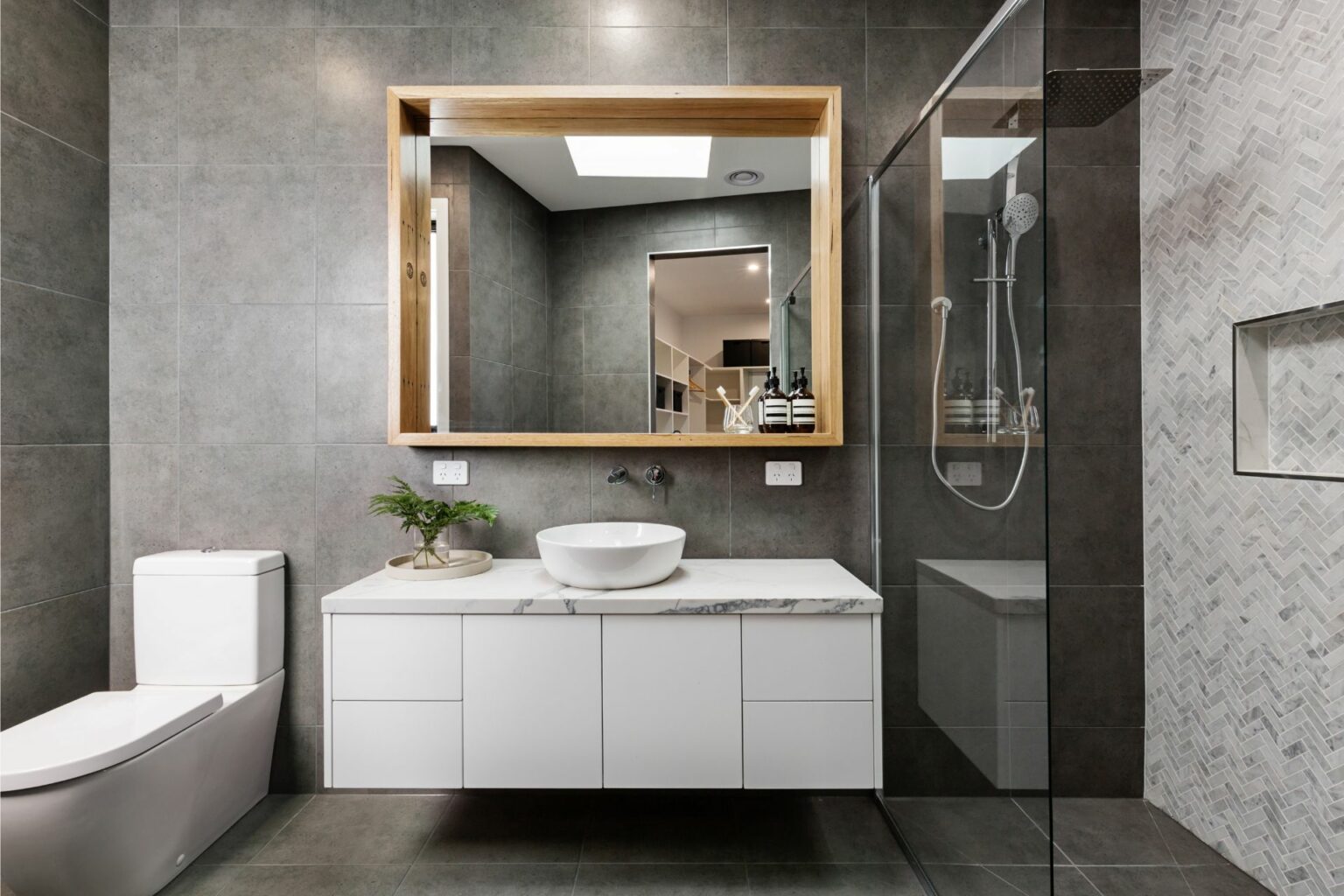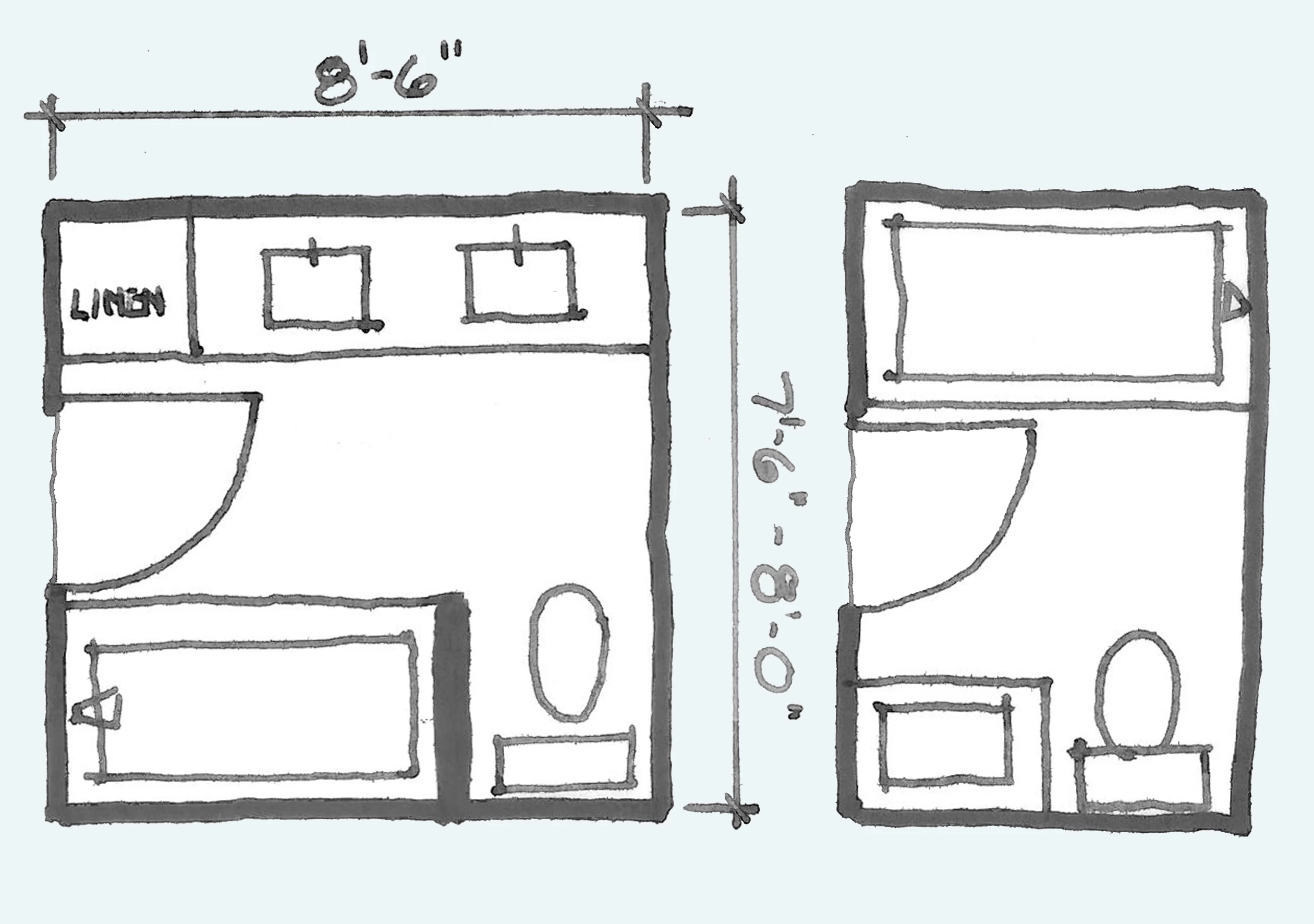Maximizing Space in an 8×8 Bathroom

An 8×8 bathroom might seem small, but with smart design choices, you can create a functional and stylish space that feels spacious and luxurious. The key is to maximize every inch and use clever design techniques to create an illusion of more space.
Space-Saving Design Techniques
Incorporating space-saving design techniques is crucial for maximizing an 8×8 bathroom’s functionality and visual appeal. These techniques can create a sense of openness and streamline the layout.
- Corner Showers: Opt for a corner shower instead of a traditional rectangular enclosure. This maximizes floor space while still providing a spacious showering experience. You can even incorporate a built-in bench for added comfort.
- Floating Vanities: Floating vanities create a sense of airiness by elevating the vanity off the floor. This also provides additional storage space beneath the vanity.
- Vertical Storage Solutions: Utilize vertical space with tall cabinets, shelves, and mirrored storage units. This minimizes floor clutter and maximizes storage capacity.
Maximizing Natural Light
Natural light is essential for creating a bright and airy atmosphere in a small bathroom. Incorporating windows or skylights can dramatically enhance the space.
- Windows: If your bathroom has a window, make the most of it. Use sheer curtains or blinds to allow natural light to filter in while maintaining privacy.
- Skylights: If your bathroom doesn’t have a window, consider installing a skylight. This will bring in natural light and create a sense of openness.
Layout and Functionality: 8 X 8 Bathroom Design
In an 8×8 bathroom, maximizing space and functionality is crucial. The layout needs to accommodate a shower, toilet, vanity, and storage while maintaining a comfortable and aesthetically pleasing design.
Shower Configurations
The shower is a key element in any bathroom, and choosing the right configuration is important. Different shower options can maximize space and create a unique look.
- Walk-in Showers: These showers are popular in modern bathrooms as they offer easy access and a spacious feel. They typically feature a curbless entry, making them ideal for people with mobility issues. Walk-in showers can be customized with various materials and finishes to match your design aesthetic.
- Corner Showers: Corner showers are an excellent space-saving solution for smaller bathrooms. They utilize a corner of the room, maximizing the available space. Corner showers can be designed with various configurations, including single-person or multi-person showers.
- Shower Stalls: Shower stalls are a classic option that provides a separate showering area within the bathroom. They are typically enclosed with glass or shower curtains and can be customized with different features like built-in shelves or seating.
Toilet Placement
The placement of the toilet is crucial for both functionality and accessibility. Consider these factors when deciding where to place your toilet:
- Accessibility: The toilet should be easily accessible, with enough space for wheelchair users or individuals with mobility challenges. Ensure there is sufficient clearance around the toilet for comfortable movement.
- Privacy: The toilet should be placed in a private area, away from the entrance of the bathroom. Consider using a wall or partition to provide a sense of privacy.
- Plumbing: The toilet’s location should be convenient for plumbing connections. It’s essential to plan the placement carefully to avoid any plumbing issues.
Style and Aesthetics

An 8×8 bathroom is a blank canvas for your design dreams. It’s the perfect size to showcase a variety of styles, from modern minimalism to classic elegance. Here’s how to create a cohesive and visually appealing space.
Mood Boards for Different Styles
Mood boards are visual inspiration tools that showcase different bathroom styles. These boards can help you visualize the overall look and feel of your bathroom.
- Modern: Think sleek lines, clean surfaces, and a neutral color palette with pops of color. Examples include white subway tiles, chrome fixtures, and a statement vanity.
- Minimalist: Minimalism is about creating a sense of calm and simplicity. This style often features neutral colors, natural materials, and a focus on functionality. Think natural wood, white walls, and a freestanding bathtub.
- Traditional: Traditional bathrooms often feature classic elements like wainscoting, crown molding, and ornate fixtures. Consider using warm color palettes, natural materials like wood and marble, and a clawfoot tub.
- Farmhouse: This style embraces a rustic and cozy feel. Think distressed wood, exposed beams, and natural materials like stone and brick. Use a neutral color palette with pops of color in the accessories.
Color Palettes, Textures, and Materials
Color, texture, and materials play a crucial role in creating a cohesive and visually appealing bathroom design.
- Color Palettes: Choose a color palette that reflects the overall style of your bathroom. Modern bathrooms often feature neutral colors with pops of color, while traditional bathrooms might incorporate warm tones and earthy hues.
- Textures: Texture adds depth and visual interest to a bathroom. You can use different tile textures, natural stone, wood, or even wallpaper to create a layered look.
- Materials: Materials should be durable and moisture-resistant. Consider using materials like ceramic tile, porcelain, natural stone, wood (with proper treatment), and metal for fixtures.
Lighting Solutions, 8 x 8 bathroom design
Proper lighting is essential for creating a functional and visually appealing bathroom.
- Recessed Lighting: Recessed lighting provides general illumination and can be used to highlight specific areas.
- Pendant Lights: Pendant lights add a touch of style and can be used over the vanity or in the shower area.
- Sconces: Sconces are wall-mounted lights that provide task lighting and can be used to create a warm and inviting atmosphere.
